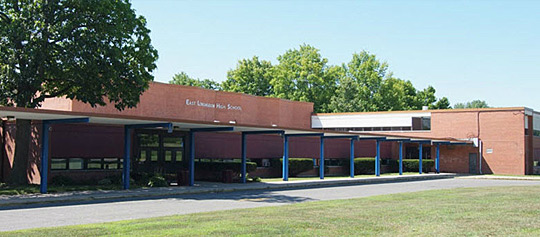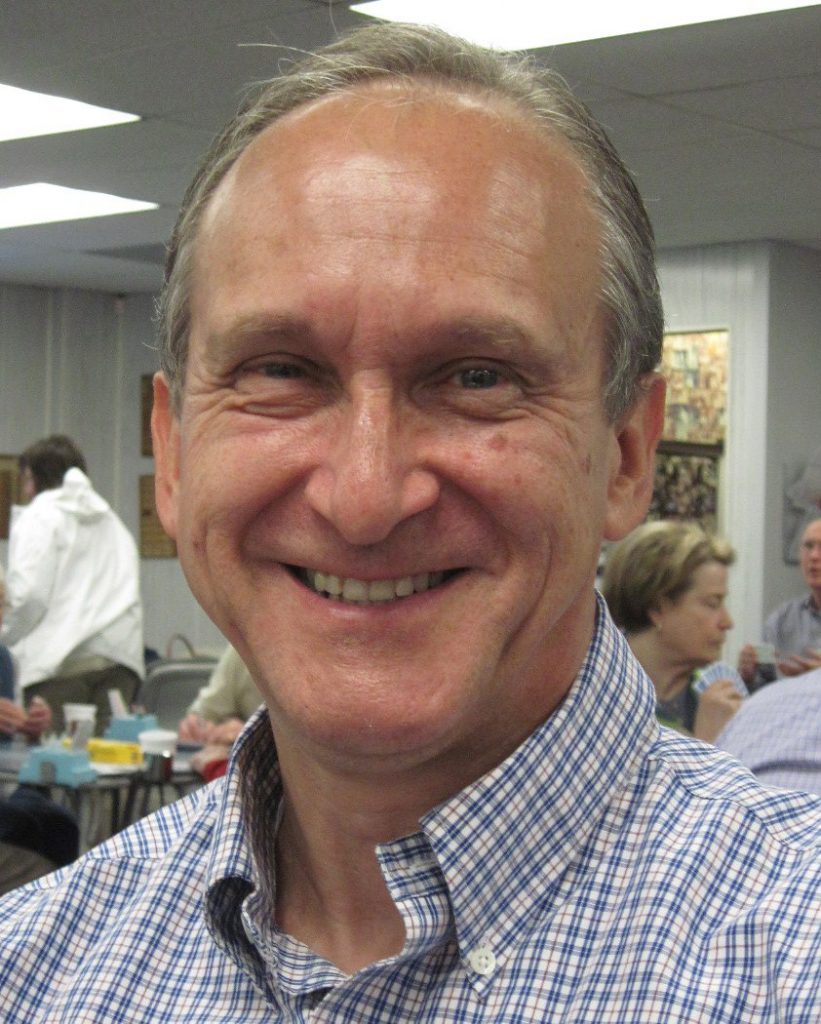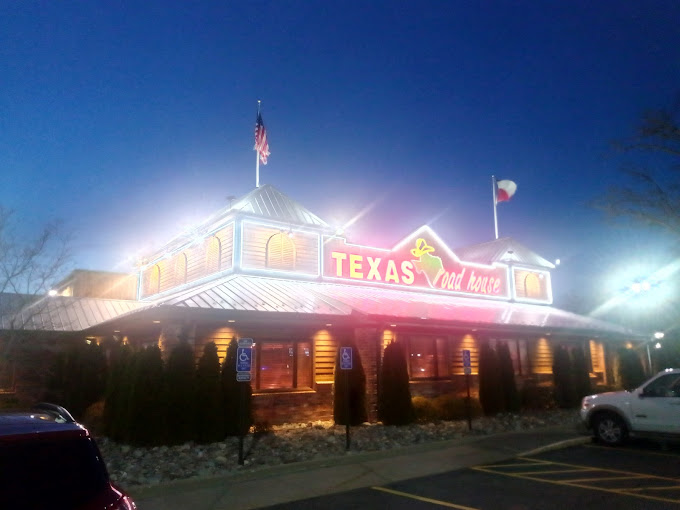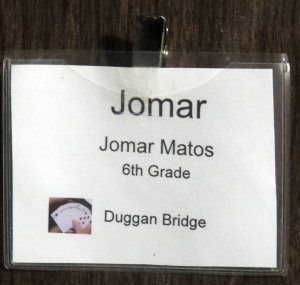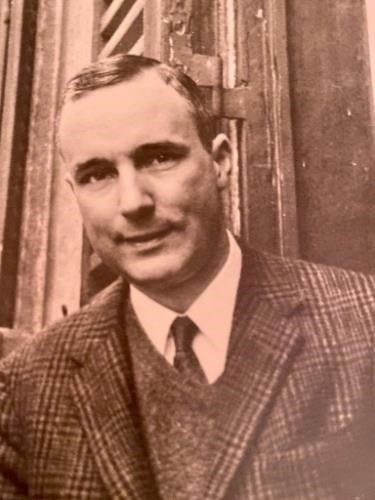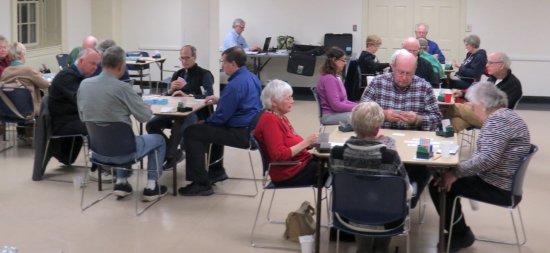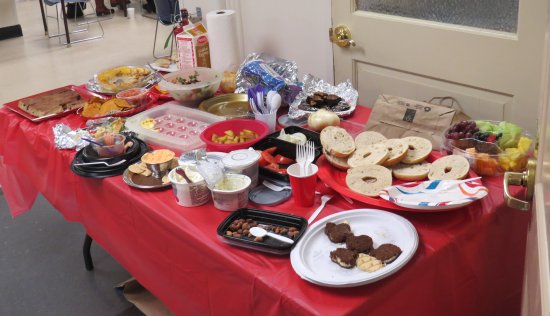Let me begin by setting the record straight. Most of this was not my doing. The main players were my good friends and bridge teammates, Bob and Shirley Derrah of Springfield, MA1. I saw them often at tournaments and occasionally … Continue reading
Let me begin by setting the record straight. Most of this was not my doing. The main players were my good friends and bridge teammates, Bob and Shirley Derrah of Springfield, MA1. I saw them often at tournaments and occasionally at the Hartford Bridge Club, before and throughout these adventures.
New England Youth Bridge, Inc.: At some point in 2013 I was at a regional tournament when an announcement was made that there would be a meeting of the New England Youth Bridge group during the evening. I cannot remember at which tournament this occurred. It was also mentioned that anyone who was interested in helping to attract young people to the game was invited.
When I arrived at the site of the meeting the only other people there were Jim Rasmussen2 and Adam Parrish3, who had called the meeting. I introduced myself, told them that I was interested in whatever I could do for youth bridge, and mentioned that I had recently become the webmaster. One of them asked me, “Webmaster of what?” They were pretty surprised that I was the I managed NEBridge.org.
Later I met Jeff Lehman4, who was about to become the president of the group, Lisa Allison5, who ran a successful youth bridge program in New Hampshire, and Pam Miller6, Jim’s partner.
Over the course of the next few years I corresponded with Jeff frequently.
East Longmeadow Several times in, I think, the spring of 2013 Bob told me about the progress of the students he was teaching to play bridge at a school in East Longmeadow, MA. I think that it was a middle school, but since I was never there in person, I may be mistaken.
According to Bob, most of the participants had only a passing interest in the game, but one of them, whom Bob referred to as “that autistic kid”7, seemed to be a natural. His name was Jack Donaghue.8
In the school year of 2013-2014 Jack was a student at East Longmeadow High School (ELHS), which is just north of the state line, a short drive from Enfield. Somehow a bridge club was formed at the high school.
In those days I was not as busy with work at TSI as I had been a decade earlier, and I had developed a strong interest in bridge. Even a casual observer of the competitive bridge population could easily realize was that it was quite elderly and getting more so every year. In my youth a lot of people learned bridge in college. Although I don’t remember how I did it, I learned to play bridge in high school. Many of those college students took up the game again when they became “empty-nesters” or retired. That cycle started to break down when computers became prevalent.
In 2013 I was 65, and Bob was sixteen years older than I was. I was definitely interested in promoting bridge among younger people. So, when Bob asked me if I wanted to help with the club at the high school I told him that I definitely was very interested.
I attended two or three of the after-school meetings at ELHS. They were held in a classroom at the school, and only a handful of students attended. Jack, who had been elected president of the club (an office with no duties) was heads and shoulders (really hips and knees, too) better at bridge than the others. One student was female and Jack’s age; the others were guys who were bigger and evidently older than Jack.
The setting was not ideal. There were no tables and chairs. Four desks (the kind with a seat that you enter from one side) had to be pulled together in an X shape. I don’t remember Bob ever trying to present a lesson. The attendees generally just took a seat and played, with Bob making comments about what was transpiring. I filled in to make a fourth or an eighth when necessary.
The girl, who attended every week and obviously had a crush on Jack, brought with her a book on bridge that had been written by her aunt or grandmother. She obviously treasured it.
The attendance from the guys was not as regular. They seemed to be more interested in sports and other activities at school. In the last week that I attended, only Jack and the girl were present. She pleaded wtih Bob and me to do something to prolong the club.
After that debacle Bob told Jack that it was up to him to resuscitate the club. I could understand why he said that, but Jack did not have the kind of personality that might enable him to pull this off. Besides, he had at least as much interest in skiing as in bridge. The club died, but Bob maintained his relationship with Jack.
The Hartford Bridge Club (HBC) annually held a one-day bridge tournament for beginners. Bob contacted them about arranging a partner for Jack at the event scheduled for October 26, 2014. Trevor Reeves,9 who at the time had very few masterpoints, agreed to play with him. I called Trevor to explain Jack’s situation. I think that my wife Sue might have provided transportation for Jack and herself.
Trevor and Jack did very well in both sessions.


They won Flight C in the morning and both Flight B and Flight C in the afternoon. Those performances earned them 2.71 masterpoints. Most beginners play regularly for several months before amassing so many. Sue, who had been playing for more than three years, was upset that Jack and Trevor had edged out her and Judy Cavagnaro in the morning round.
I saw Jack at a few tournaments after that. I said hello to him, and he mumbled something in return. Bob told me that he had decided to join the skiing team at ELHS.
Duggan 2016: One of Bob and Shirley’s grandsons, Matt Sullivan,10 was the vice-principal at Duggan Academy in Springfield, a middle school with grades six through eight. Matt was interested in Bob’s idea of teaching some of its students how to play bridge.
Duggan was like no school that I had ever been in. There was much more security. Only one door could be used, and someone at the office needed to unlock it remotely. A policeman was assigned to the school and was always present during school hours.
The school banned the wearing of hats. I always wore a baseball cap when I was outside or driving to protect my eyes from glare. My optometrist had recommended it. Several times I was asked to remove my cap before proceeding to a hallway, stairs, or classroom. Two or three times the school went into lockdown while I was there. Nothing came of any of these events.
Duggan was not a local grade school. It was a magnet school with a focus on Social Justice. The school’s emblem emphasized Diversity, Opportunity, Equity, and Justice. This contrasted with my grade school, which had no Black kids in any grade, and my high school, which had one out of eight hundred. There were some Hispanic students, but in Catholic schools this was to be expected.
The school year at Duggan was divided into “cycles” of four or five weeks. In each cycle the students were allowed to participate in one “Enrichment Program” to supplement their regular classes. These programs were allotted two hours per week during regular school hours. Matt and Bob worked to have bridge included beginning at Duggan in January of 2016.
Two classes took bridge, one of sixth graders and one of seventh graders. My recollection is that Duggan did not have an eight grade class until the next school year.
The kids needed a lot of supervision. To help out with managing them Bob recruited Maxine Cechvala11, whom I knew from the HBC, and two people with whom Shirley had played in a local club. My wife Sue and I also attended every week.
In those days an annual event for beginners was held at the largest bridge club in New England, the Bridge Spot in Woburn (WOO bun), MA. Matt offered the kids a chance to participate in the one on Saturday, May 8, 2016. He would supply the transportation and treat them to supper at a restaurant in Boston. I am pretty certain that Bob footed the bill for most of this.
Bob had devised a good plan for getting the kids up to speed. They would begin by playing whist, which is essentially bridge without contracts. We then graduated to Mini-Bridge, in which each player announces his/her masterpoints. The team with the most points names the trump suit (or notrump), and a table is consulted to determine the contract. The hope, of course, was that the students would get tired of this, and we could move on to bidding for the contract, which I have always thought was the real attraction of the game.
The tournament in Woburn used the Mini-Bridge rules. I have posted a description of the tournament itself and the subsequent supper here. If you examine only one of the hundreds of links that I have posted, check out this one. It is short and endearing, if I do say so myself. Included are many photos and the names of all of the participants.
The Bridge Bulletin, the official publication of the American Contract Bridge League (ACBL), published an abbreviated version of the text and pictures of the webpage mentioned above in its August 2016 issue.12
We never got to bidding in either of the classes, but it was a marvelous experience for everyone involved. Bob and I were enthusiastic about the prospect of working with these and other kids in the upcoming years.
Duggan and Chestnut South 2017: As I mentioned in the write-up of the trip to Woburn, Bob was fairly confident that in the following year we could expand our efforts to more middle schools in Springfield. The reason for his optimism was the the employment of another grandson, Matt’s brother Dan13, as the vice-principal of a middle school on the west side of town. Unfortunately he had a much more difficult time enlisting helpers. I went to every session that I could, and Sue occasionally helped, but Maxine was no longer around, and no one else volunteered.
The security at Chestnut South was at least as tight as at Duggan. The door was unlocked, but we were required to stop at a table, sign in, and then go through a metal detector. We then had to proceed to Dan’s office. Someone there would eventually unlock the closet in which the tables were kept and the room that we were assigned to use that day.
Chestnut was designed to serve the “talented and gifted” students of Springfield. This was encouraging, but it did not have an Enrichment Program. The bridge group met once a week after school. The kids had to arrange their own transportation, which was certainly a potential problem. Many of the students rode the bus to school.
The bridge program at Chestnut South never really got established. At first we had a classroom that we could use. On one occasion we had even enough participants for three tables, but attendance fell off dramatically after that. After a few weeks only two or three players came regularly. Only one student was both willing and able to go to Woburn to play in the second tournament. He had to play with a Duggan student that he had never met.
We ran into problems at Duggan, as well. Part of the Enrichment Program had been moved (for at least a few cycles) from the school to a nearby Boys and Girls Club. The idea was that the students would be excited about the environment and would have a place to hang out if they wanted to
The kids were bussed there from Duggan and bussed back to the school at the end of the session. Of course, the transportation used up part of the period. A bigger problem, however, was that our room was near the gymnasium, and many of our students wandered over there instead of coming to the bridge room.
My recollection is that the sixth-graders, whom we taught at Duggan, seemed to have a lot of potential, but the drop-off in the participation in the other two grades was marked. Only a few of the students from the previous year returned the second year. Because the classes were populated mostly by new students, we had to start at square one in all three classes. The eighth-grade group was much too chatty. At one point I had to ask Bob to switch tables with me before I lost my temper.
I remember one peculiar situation in which one of the girls touched the place on the back of one of my hands where a vein was prominent, just to see what it felt like. I was startled at this, but I did not say anything.
The highlight of the year was the time that a crew from one of the local television stations visited the school, filmed a group of seventh-graders playing bridge in the hallway outside of the auditorium, and interviewed one of the students, Joe Walsh, about the activity. He was very polished and explained the situation very well. It was shown on the station’s newscast. A very nice report was broadcast locally.
Only a few students attended the session in Woburn in the spring. Matt drove the students there in his own car, and he actually ended up playing in the tournament with one of the students. Those who attended the tournament and the subsequent supper (complete with oysters) had a splendid time, but it was disconcerting that we were only able to bring a handful of players. No one won a trophy.
The third year: At the end of the 2016-2017 school year a letter was sent to all of the people who had volunteered at any of the Springfield public schools during the year asking for nominations for the “volunteer of the year” award. I nominated Matt Sullivan. Someone, probably Matt or Dan, nominated Bob, and in fact Bob won the award!
Bob insisted that I be included in the award, and so, Bob, Shirley, Dan, Matt, Sue, and I went to a lunch at Western New England University, which was across the street from Duggan. Bob and I were presented with the award. One of the bridge players who attended both tournaments, Tavi Chea, read a speech in which she described Bob as a wonderful person, Shirley as a “silent assassin”, and me as a perfectionist.
The principal of one of the high schools was in attendance. She expressed interest in a bridge program for her students. In retrospect I realize that I should have gotten contact information.
Shortly thereafter Bob’s health began to deteriorate. He gave all of the materials that we had been using—including a suitcase full of bidding boxes with “WMBA” (Western Massachusetts Bridge Association) written on them in indelible ink. He told me that if I wished to continue in the next year, I would need to take charge myself. I assured him I definitely wanted the program to continue and that I would do the best that I could. He gave me contact information for Matt and Dan. With two years of experience under my belt and with a few assets that I had not used at that point, I felt confident of success.
My emails to Dan at Chestnut were not answered. Bob explained to me that Dan had been promoted to principal of both Chestnut schools and he was overwhelmed with the responsibility. Bob said that Dan planned to try to get a program started in January. I wrote to Dan in December, but he did not respond to that letter either. So, there was no bridge program at Chestnut South in 2017-2018.
I solicited by email help from all of the bridge players who were within driving distance of East Longmeadow. I received responses from Judy Hyde (introduced here), Mary Petit, Randy Johnson (introduce here), and Bob Lavin. Here is what I wrote to Jeff Lehman about our experiences:
I finally was called in to meet with Matt Sullivan and a teacher, Tim Hurley,13 in late September. Duggan’s school year is divided into “cycles” of four or five weeks. In the previous year bridge participated in the Enrichment Program, which is offered during the school day for two hours a week, during the first five cycles. They explained that during the cycles in May and June the students all wanted to be outside. This year we had already missed the first cycle. Tim, who was now running the program, said that bridge would be offered to sixth and seventh graders for three cycles. There would be an after-school bridge club for the eighth graders and anyone else who wanted to attend. The good side of this was that all three sessions would be on Thursday. In the previous year we had met with eighth graders on Friday.
I expended a great deal of effort lining up bridge players from the area to help my wife, Sue, and me. I had no idea how many kids we would be dealing with. A few players committed to one day, but the only serious commitment that I got was from Bob Lavin, who lives about ten minutes from Duggan.
The Enrichment Program sessions were a severe disappointment from the beginning. Before we started I had had great hope for the seventh graders. A very promising bunch of kids in the sixth grade had participated the previous year, but none of them returned. I do not know why because I have no way to contact individual students. The dozen or so kids that we got, with only a couple of exceptions, had no interest in bridge and were quite vocal about it.
The sixth graders were also rowdy. They were all boys, and one had extreme emotional problems. At any rate it was difficult to work with both groups. They were all turned off by Bob’s presentations, which were much too lengthy and unfocused. I tried to get him to limit them to one topic for ten minutes, but that conflicted with his style.
In the third cycle (our second) we had two greatly reduced groups, but I thought that we were making progress. Our most deadly foe was the calendar. Because of holidays, snow days, and test days, each class actually got to meet only twice!
Sue and I showed up for the first session of the fourth cycle. Tim told us that the plan had always been for bridge to participate in only two cycles. This was different from the previous year and different from what he said in our meeting in the summer. He arranged for Dakota, Demetrius, and two others to meet with us that morning.
The after-school club was a fiasco from the start. Dakota and Demetrius came only two or three times. At the first meeting they told me that they wanted to attend the Magic card club, which met at the same time, on alternate weeks. In actual fact, although I always tried to find out if they were going to meet with me using the email addresses they gave the ACBL, I never knew if anyone would be there. Only one other person came the first week. I only saw Dakota and Demetrius once after the tournament in Watertown. These two kids obviously have great potential, but I have no way to reach out to them.
I actually worked harder this year than either of the last two years. When Matt worked with us, he tried to direct the kids with the best chance of success in our direction. Tim did not seem to do that. I made some mistakes (Bob Lavin, especially), but I thought that we had a pretty good group when they cut us off at the kneecaps. Another problem is that the other Enrichment Programs are more attractive than in previous years. They now offer both soccer and football.
In my last contact with Tim he said that he was turning the bridge club over to Mary Kay Brown. He indicated that Demetrius, who surely is one of the brightest kids in his class, was in danger of failing. It certainly was not because of bridge. I have never heard from Mary Kay.
In retrospect, I can certainly understand why Matt would bow out of the bridge program after his grandfather was unable to continue. Nevertheless, I was blindsided by the appointment of Tim as the new contact. When I asked a question or made a request, he responded. However, Matt had evidently shepherded many of the best students into the bridge program. That was not the case in the third year. I was especially disappointed that not a single person from the previous year’s promising sixth-grade class participated in the new seventh-grade group.
Tim’s announcement that it had been the plan “all along” for there to be only two cycles of bridge startled me. I sent an email to Matt complaining about this. All that I requested was that I be kept in the loop when decisions affected me and my group.
The point about having no idea how many would attend was critical. It was important to have one experienced player for each table—or at least every other table. Sometimes there would be three tables of students; sometimes one or less. I was occasionally short of helpers, and at least once I sent one home.
I have attended several of Bob Lavin’s lectures at regional tournaments. He did a very good job in that setting. However, his style went over like a lead balloon at Duggan. The seventh-grade class was openly hostel to him in the one presentation that I saw. Nevertheless, I had almost no choice but to let him manage all the groups while I was playing at a regional tournament in Mansfield, MA. I had made commitments to other players.
One thing that I had hoped to add to the way that we taught bridge was to incorporate more things from the Internet. All of the classrooms had Internet access and large screens. I hoped to be able to use my convertible laptop (a Yoga model by Lenovo) via an HDMI cable that I purchased for just this purpose. I had nothing but problems. The first time that I started Yoga up at Duggan it notified me that it had updates to install. That wasted at least fifteen minutes.
When I got it connected, I was prevented by the school’s security software from accessing any of the sites that I wanted to use, even my own. Tim told me that I would need to submit a list of the URL’s that I wished to use, and someone in the administration would need to approve them one by one. Then whoever maintained the security would need to implement the changes. I did not bother to try to get all of this to happen.
I did finally manage to get in touch with Mary Ann Brown, who was the official liaison with the volunteers. I have a set of emails with her that concluded by saying that Demetrius and Dakota did not seem to want to go to the Holiday sectional tournament in Watertown, MA. That turned out to be false, but I do not remember the source of the misunderstanding..
On Saturday morning December 9, 2017, Sue and I picked up Demetrius and Dakota at their houses, and the four of us drove to Watertown. I wanted them to play in the section that used the bidding boxes, but they insisted that they were not ready for it. There was never any question about any of the sixth- and seventh-graders participating. They would have been an embarrassment.
Sue and I served as table monitors in the Mini-Bridge group. At my table one of the players revoked on one hand, but no one on the other team noticed it. I told them what had happened, but it was up to the other team to spot it.
At the end of the session but before the results were announced, Dakota and Demetrius told me that they thought that they had done pretty well. They were certainly correct. Their 81.8 percent score was the highest that I had ever seen, and six years later I have still never seen one that came close.
Sue and I drove the winning pair back to Springfield and asked them where they would like to eat. They both said that we should stop at Texas Roadhouse near Sixteen Acres so that Dakota could intone, “Winner, winner, chicken dinner.” That’s where we went. We all had a really good time. Then we drove each of them home.
In July I tried to contact both schools about the upcoming school year, but I did not receive any kind of reply from either one. I cannot deny that this treatment made me a little bitter.
Preparation and Finances: The ACBL had a program for providing supplies to players working with young people. I received a pair of boxes that contained books, flimsy backpack, and special decks of cards that somehow were coordinated with the books. The books had a radically different approach from what we were planning. I put them in the recycling bin after giving one to Sue. I gave most of the cards to the students. I threw the backpacks in the trash.
The ACBL gave me a stipend of, I seem to remember, $700. It was better than nothing. I doubt that Bob bothered to apply.
I made name tags for everyone involved, both students and volunteers. I purchased Avery labels with holders. I don’t remember what they cost.
Jeff Lehman spent a great deal of time developing a lesson plan for using Mini-Bridge. Bob likewise spent time adjusting it to our purposes. I developed a fairly large set of illustrated mini-lessons. They seemed to go over pretty well. I still have them.
I went to Walmart and bought for each of the students a folder in which to keep the handouts. I didn’t fool myself into thinking that they would study them, but maybe some day someone would look something up.
Bob purchased tables, a set of duplicate boards and cards. I don’t know (and don’t want to know) how he wangled the bidding boxes. In 2023 they are still in the trunk of my Honda.
Ed Marzo: During the summer of 2016 Bob called me up and invited me to come with him to visit Ed Marzo,14 the man who had developed the very popular bridge program called DealMaster Pro. I had absolutely no idea that this legendary figure lived in the Springfield area.
I drove to Bob’s house. He drove the pair of us to Ed’s small home. He was living by himself at age 88. Maybe there is hope for the rest of us.
Ed was no longer involved in the development, sales, or support of his product, but he knew it like the proverbial palm of his hand. His short demonstration convinced me that this was a very worthwhile program to have. He told us that he had invented it in order to show a friend what a finesse was, but it was not clear to me how we could use it as a teaching aid for youngsters.
This was right up my alley, but Bob could not follow what Ed was saying. Ed gave both of us a copy. I have used mine extensively for projects outside of my work with the young students. Bob tried to use his, but it frustrated him. I hoped to be able to schedule some time with him to show him how to use the program, but it never happened.
Thoughts: This entry, more than any other, has caused me to think about a few topics in a new way. Remembering Jack Donaghue made me think about myself. Am I autistic? I cannot even remember learning to play bridge. I just picked it up somewhere when I was in high school, probably from a book. If that is not autistic, what is? Also, would a sane person undertake, as I have in the 1948 project, to record absolutely everything that he could remember—and stick with it for more than two years and over 700,000 words? I have always thought of myself as a shy but eloquent person with an exceptional stick-to-itiveness, but maybe I am on “the spectrum”.
I also have been thinking about public schools. The young people whom I worked with at urban middle schools lived in a different world from the one in which I grew up in Kansas City. I developed great respect for people like Matt who devote their lives to helping these kids make something of themselves.
What could I have done to make the classes better? At the end I regretted introducing duplicate scoring. Most of the students did not understand it, and it deprived them of instant analysis of their performances. If I had it do do over again, after the kids became familiar with Mini-Bridge I would have introduced rubber bridge scoring. In that way every table would have a winning pair and a losing pair.
1. Bob Derrah died in 2018. His obituary can be found here. Shirley died less than two years later. Her obituary is here.
2. Jim Rasmussen moved to Seattle, WA.
3. Adam Parrish moved to New York City, where he is a playwright, bridge teacher, and a columnist for the Bridge Bulletin.
4. In 2023 Jeff Lehman was still active in bridge in New England.
5.In 2023 Lisa Allison was still active in bridge in New Hampshire.
6. Pam Miller stopped paying ACBL dues in 2020. At the time she lived in Cambridge, MA.
7. I am quite sure that Bob did not mean this in a disparaging way. I did not know any of the people involved, and he wanted to identify one of them for me. If I had seen them, he probably would have used a physical attribute instead.
8. Jack would be 24 years old in 2023 when this entry was composed. He stopped paying his ACBL dues in 2020. At the time he had 60 masterpoints, which was more than I expected to see. I could not find any references to him on the Internet after that date.
9. Trevor, however, was not new to the game. He had played a considerable amount of bridge in England before moving to the colonies. The ACBL, however, had not yet assigned him a quantity of masterpoints to reflect that experience.
10. I last saw Matt Sullivan at Bob’s wake. I got to meet his (and Dan’s) mother, who was Bob’s daughter. This made me feel really old. In 2023 Matt became principal of Pioneer Valley Regional School. His LinkedIn page is here.
10. Maxine Cechvala moved to Ponte Vedra, FL. She is still an active member of the ACBL. She has returned to New England a few times.
11. The recent Bridge Bulletins, including the one with this article on p. 30, are available online to members.
12. Bob had worked for Monsanto for several decades. He spent a good part of the last few months of his life testifying in one of the trials that the company (owned by Bayer) faced.
13. In 2023 Dan Sullivan was still the principal at Chest nut. His LinkedIn page is here.
13. Tim Hurley moved from Duggan to a different school in the area. His LinkedIn page can be found here.
14. Ed Marzo died in 2019. His obituary can be read here.
15. I used DealMaster Pro to generate a large number of hands to test hypotheses about how specific types of hands should be bid and played. The program allows the user to specify what limitations to put on each hand. For example, North’s hand could be limited to ones with a void in clubs, but the other hands could be generated randomly.





